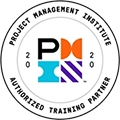Corporate Training
From Skill Gaps to Strategic Wins!
Our corporate training programs are designed to deliver measurable business outcomes through high-impact professional development training tailored to your team’s unique needs.
At Corporate Education Group (CEG), we specialize in leadership development courses, management training for employees, and executive training programs that empower your people to lead, manage, and perform at their best. Whether you’re focused on business skills training, improving communication, or preparing teams for project management certification, our programs ensure you meet your strategic business goals.
Why Choose CEG for Your Corporate Training Needs?
Customized Corporate Training
We create tailored learning solutions that align with your company’s culture, challenges, and objectives.
Onsite and Virtual Training Options
Our flexible delivery includes onsite employee training, live virtual sessions, or hybrid formats for dispersed teams.
Curated Assessments
Our assessments serve as the launch pad for targeted learning sessions or more robust guided learning journeys — all aligned with your business needs and organizational culture.
Trusted by Leading Organizations
As a leading corporate training provider, we’ve helped global brands transform performance with scalable corporate learning and development programs.
From first-time manager training to senior leadership development, our goal is to drive lasting performance improvement. Explore how our corporate learning solutions can help your organization thrive in today’s dynamic business environment.
Ready to boost team performance through expert-led training? Contact us today or explore our corporate practice areas to get started.

Practice Areas
Management and Leadership
Cultivate the skills necessary to effectively guide teams, drive organizational success, and foster personal growth.
Project Management
Master the essential skills and strategies needed to proficiently plan, execute, and complete projects on time and within scope.
Business Analysis
Learn the techniques and tools to systematically analyze and improve business processes, enhancing overall efficiency and decision-making.
Collaboration, Inclusion, and Belonging
Acquire the understanding and skills to create a more equitable and harmonious workplace for individuals of all backgrounds.
Agile and Scrum
Establish the methodologies and techniques to enable iterative and collaborative project management, ensuring adaptability and efficiency.
Lean Six Sigma and Business Process Management
Develop the tools and methodologies to streamline processes, reduce waste, and enhance quality through data-driven decision-making.
Corporate Education Group (CEG) is a leading provider of professional development and training solutions, specializing in customized learning programs that help organizations build leadership, project management, and business analysis capabilities. With a focus on tailored learning experiences, CEG collaborates with companies to design and deliver training that aligns with their unique business goals, industry challenges, and workforce needs. Offering instructor-led, virtual, and blended learning solutions, CEG empowers teams to enhance performance, drive innovation, and achieve lasting success.
For more information on this topic, as well as how Corporate Education Group can help power your organization’s performance, contact us via email or call 1.800.288.7246 (US only) or +1.978.649.8200. You can also use our Information Request Form!



- ©2025 Corporate Education Group, operated by CEG Operating Company, LLC. All Rights Reserved.
Privacy Policy | Terms and Conditions - PMI®, PMP®, CAPM®, PgMP®, PMBOK®; and the PMI®; Registered Education Provider logo are registered trademarks of the Project Management Institute, Inc. CBAP® and IIBA® are registered trademarks of International Institute of Business Analysis. All other trademarks mentioned on this site are property of their respective owners. All rights reserved. CEG is an approved Authorized Partner within the Blanchard Authorized Partner Program and is licensed to market, sell, and train SLII®.
